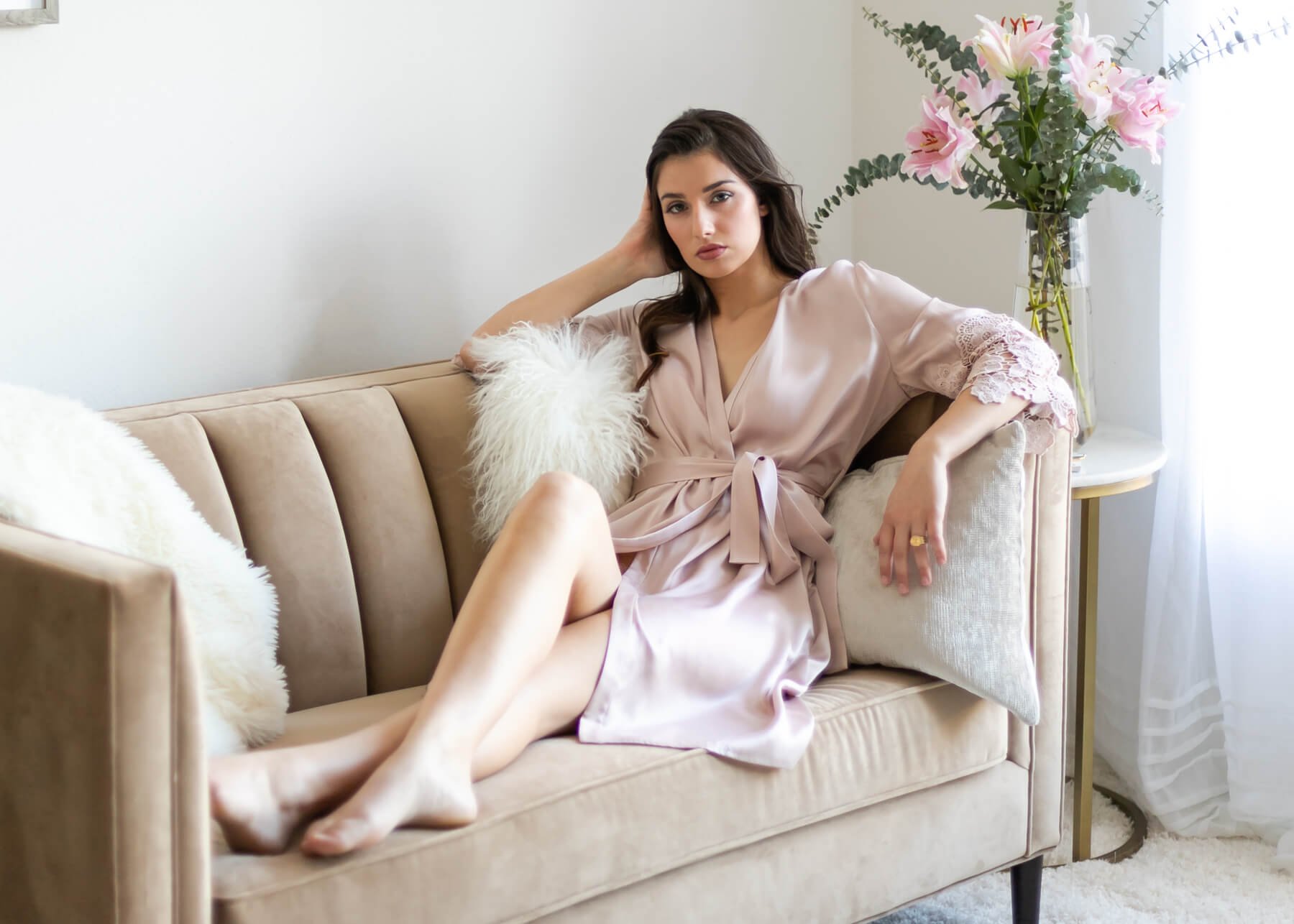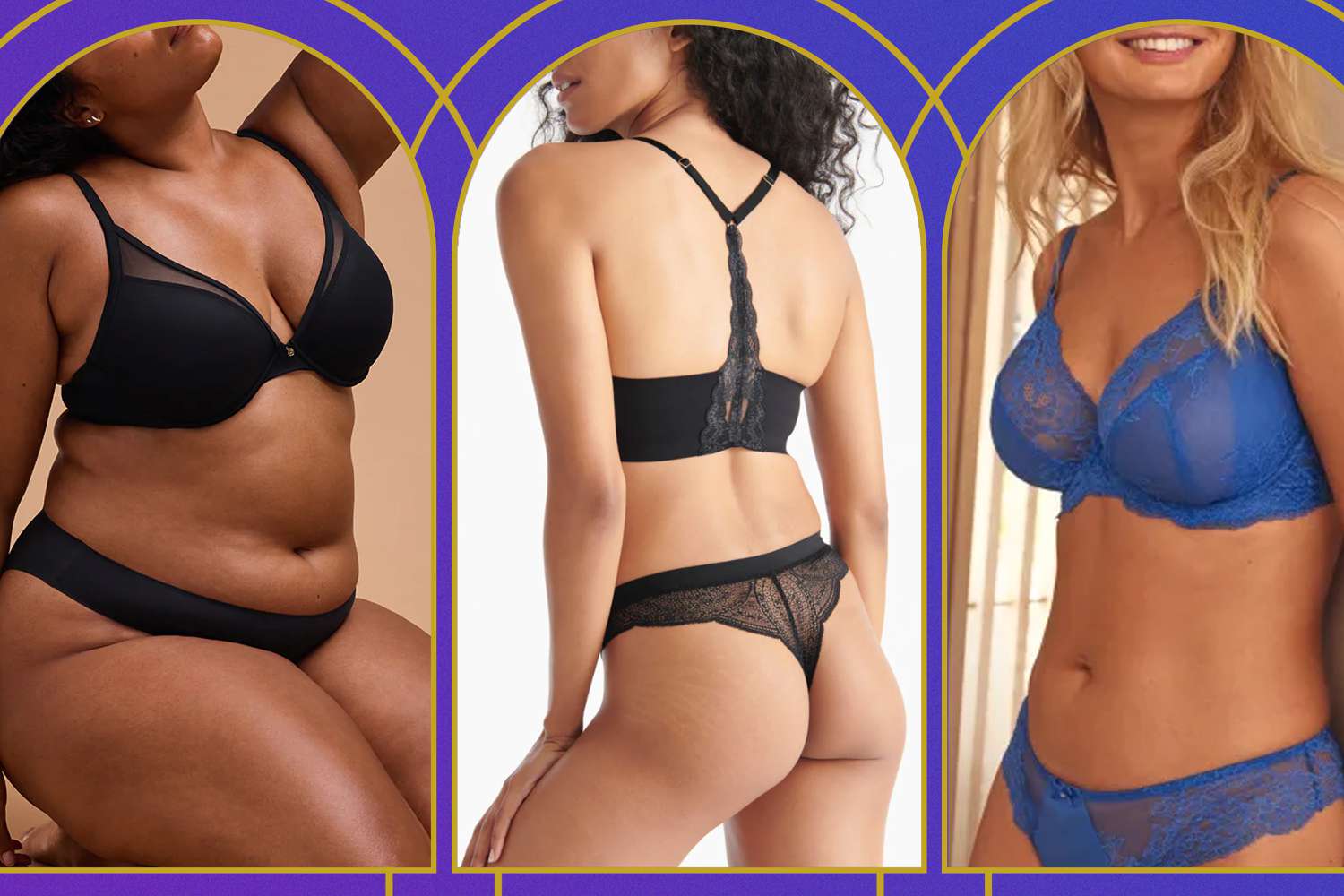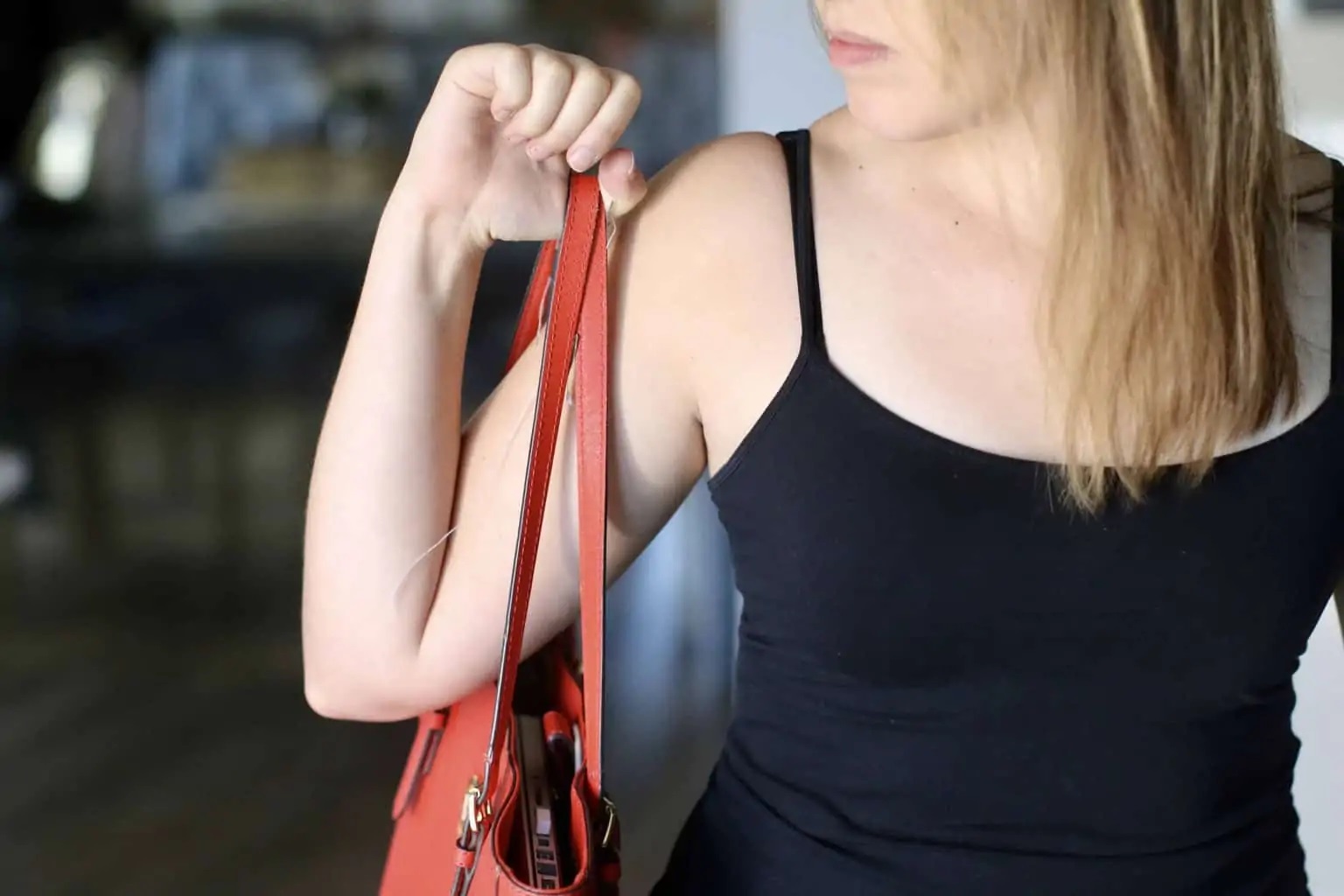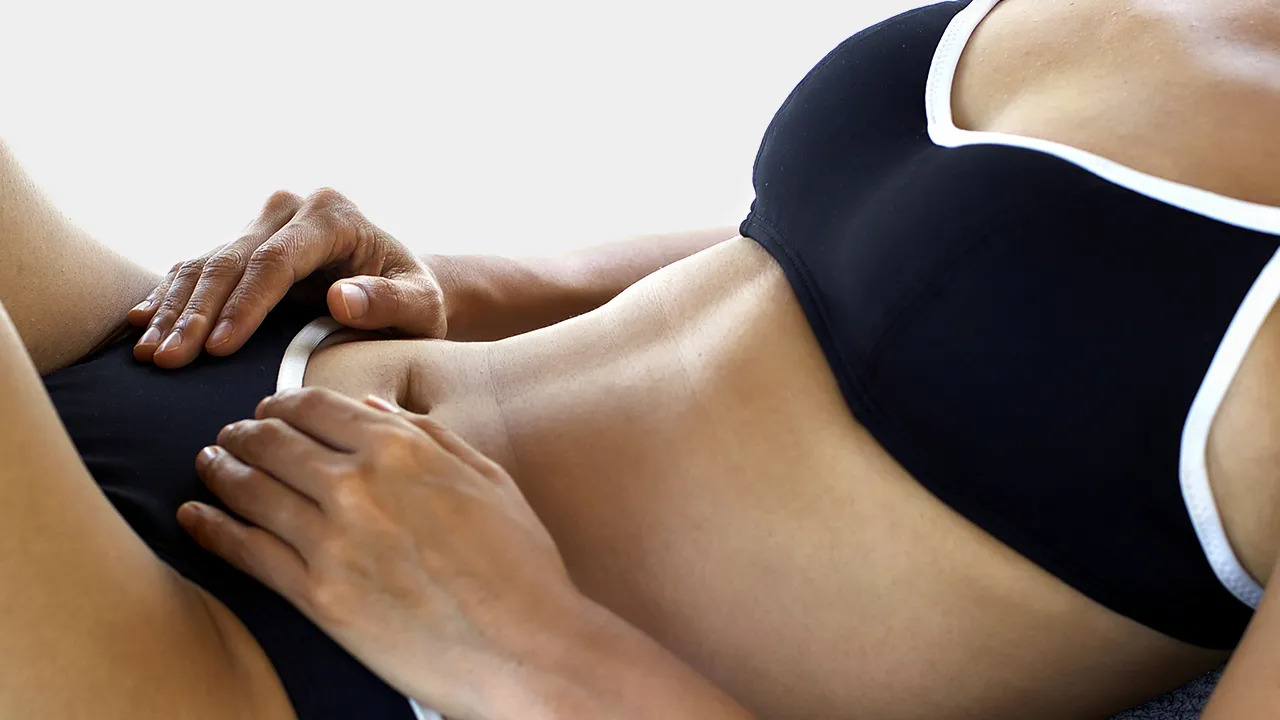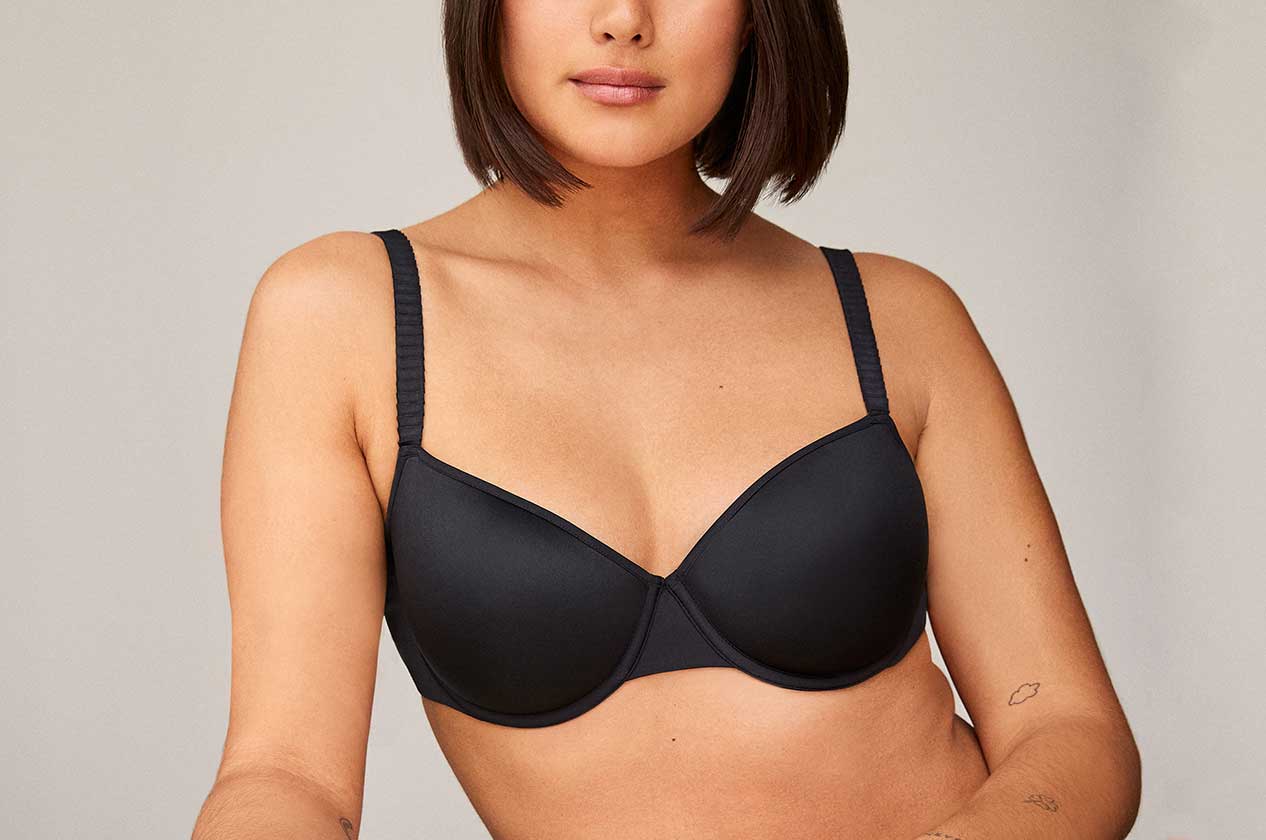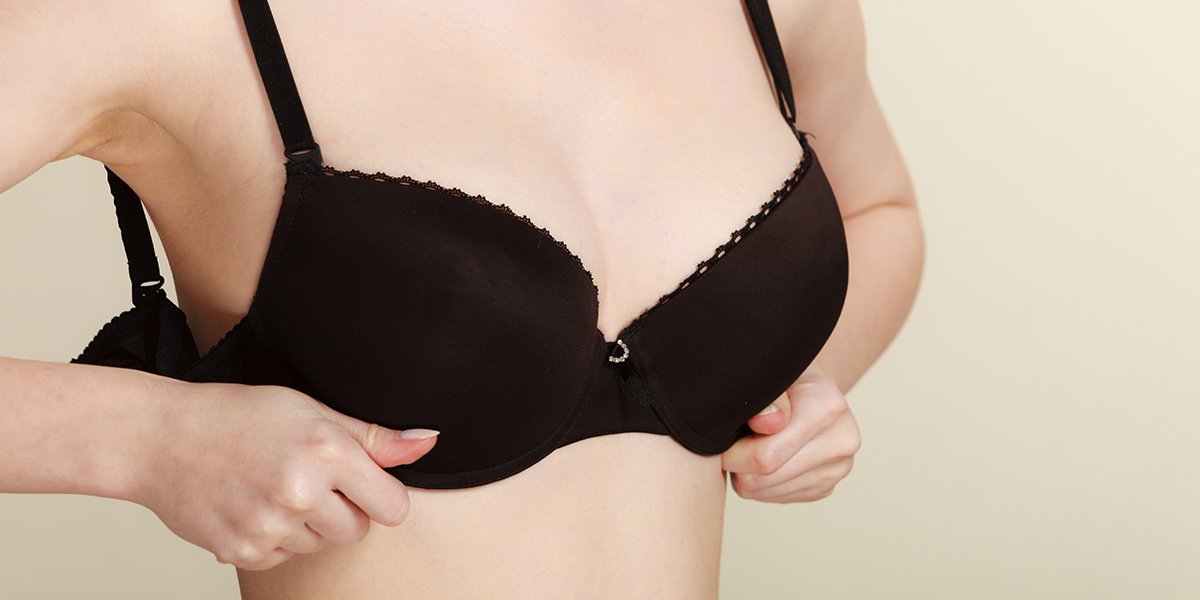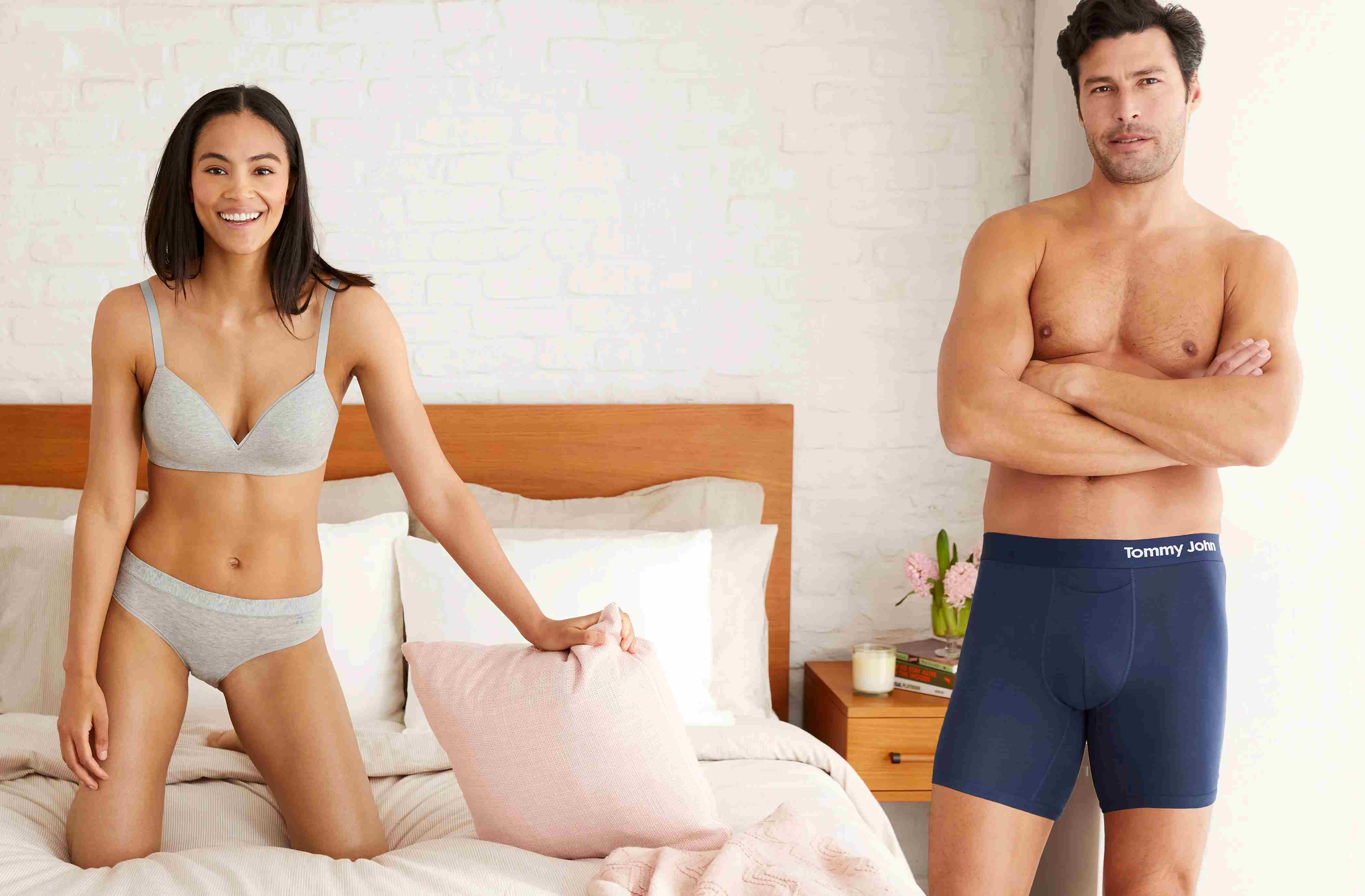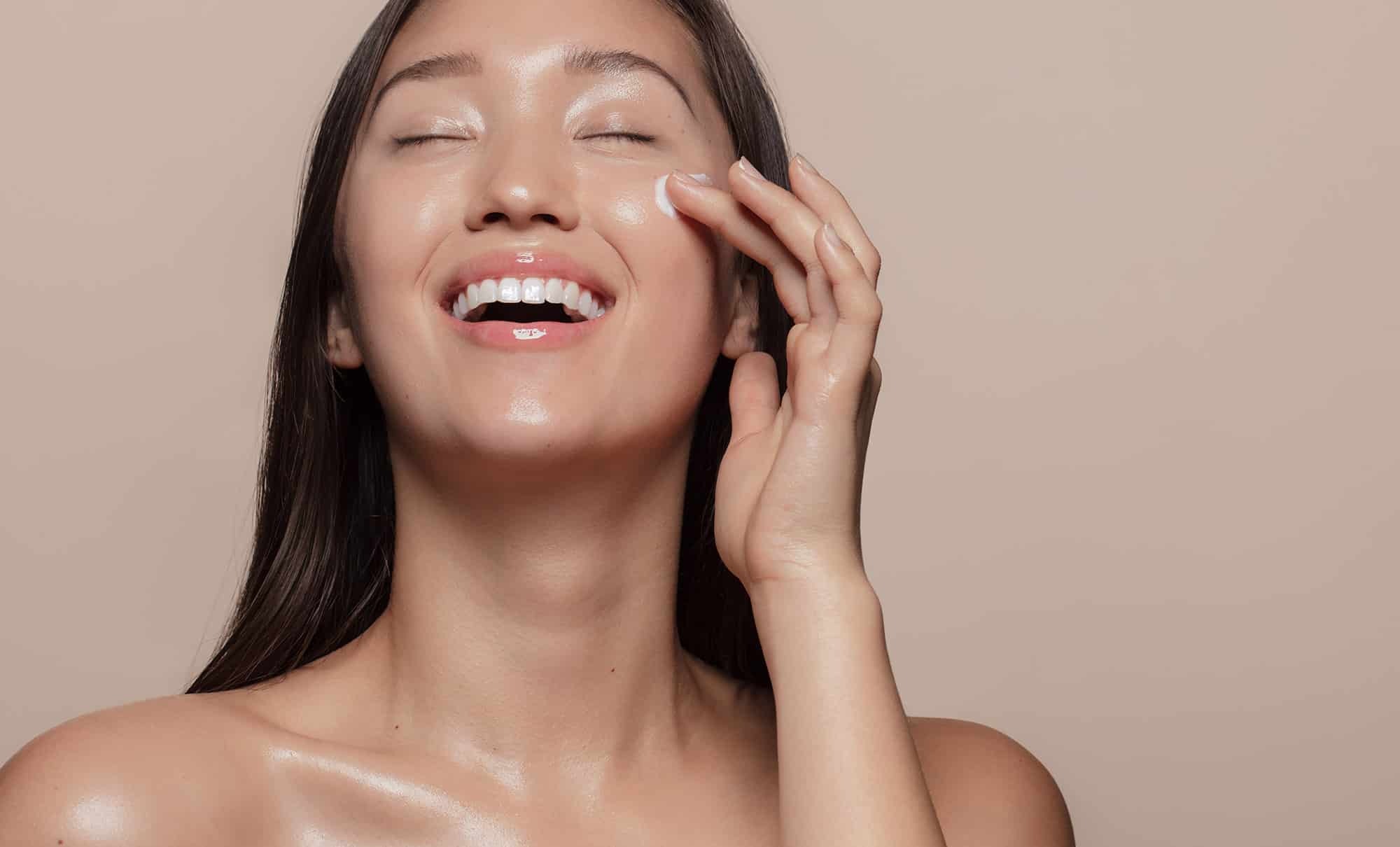Home>Children's Underwear>When Should A Girl Start Wearing A Bra
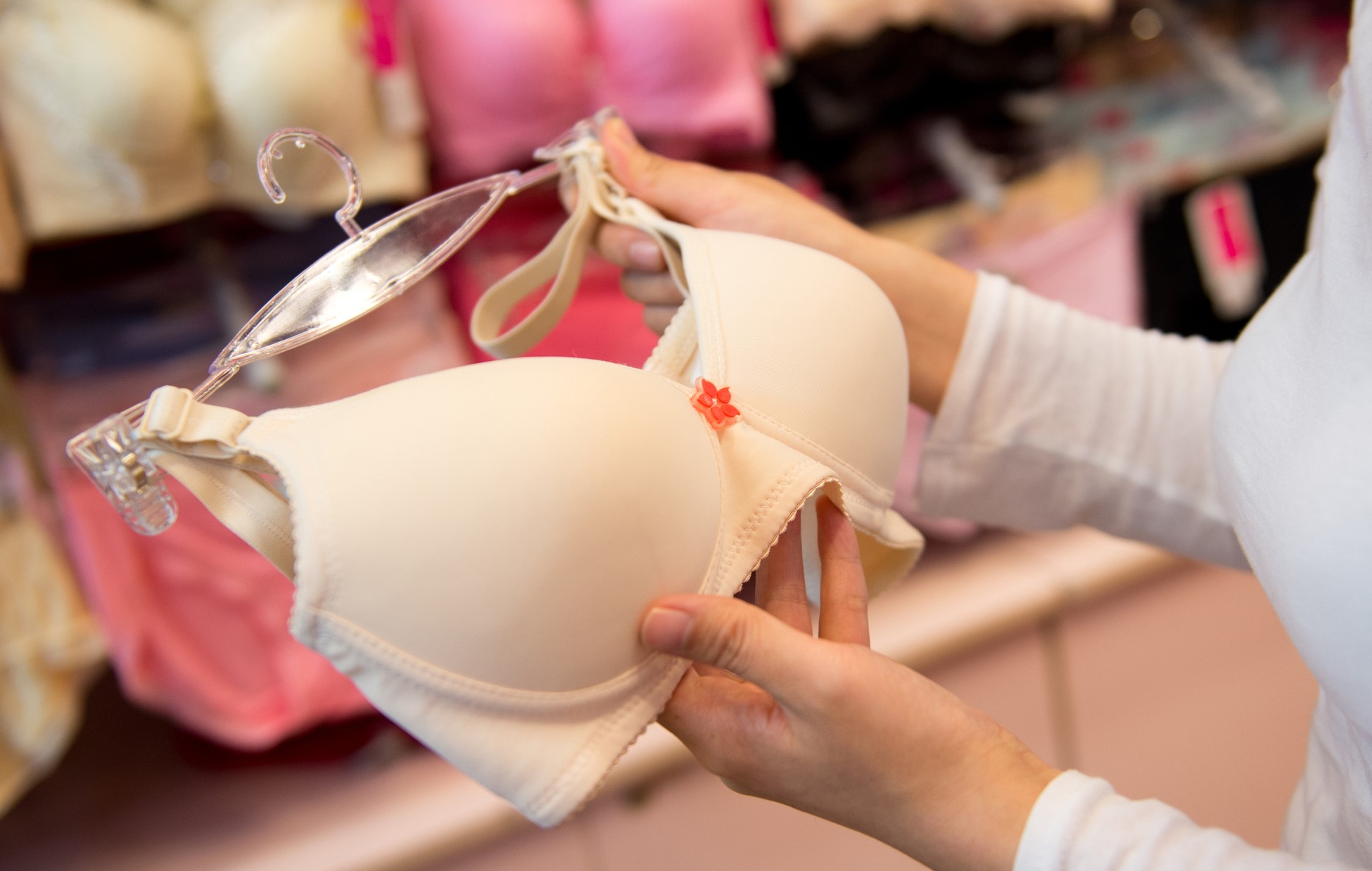

Children's Underwear
When Should A Girl Start Wearing A Bra
Modified: September 23, 2023
Find out when is the right time for a girl to start wearing a bra. Learn about the benefits and purpose of training bras for young girls.
(Many of the links in this article redirect to a specific reviewed product. Your purchase of these products through affiliate links helps to generate commission for Under-tec.com, at no extra cost. Learn more)
Table of Contents
When Should A Girl Start Wearing A Bra
Puberty brings about many changes in a young girl’s body, and one of the most significant changes is the development of breasts. As parents and guardians, it is important to navigate this stage alongside our daughters and provide them with the support and guidance they need. One of the questions that often arises is when should a girl start wearing a bra?
There is no magic age or one-size-fits-all answer to this question. Every girl develops at her own pace, and it’s essential to pay attention to the signs indicating that wearing a bra might be necessary. These signs include breast buds, which are small, tender bumps under the nipples, as well as the growing size of the breast tissue.
It’s important to remember that wearing a bra is not just about aesthetics; it’s about providing proper support for the developing breasts. Without the right support, girls may experience discomfort and pain, especially during physical activities. A well-fitted bra can alleviate these issues and boost overall comfort and confidence.
Comfort should be a priority when choosing a bra for a young girl. Look for styles made from soft and breathable materials, with adjustable straps and a wide underband for added support. Avoid underwired bras, as they can be uncomfortable and potentially interfere with breast development.
Proper fit is crucial to ensure comfort and support. To measure for a bra, start by measuring the circumference of the chest just beneath the breasts to determine the band size. Then, measure the fullest part of the bust to find the cup size. Remember that sizes may vary between brands, so it’s essential to refer to the specific brand’s sizing chart.
Initiating a conversation with your daughter about wearing a bra is equally important. Make it a positive and empowering discussion where she can ask questions and express any concerns she may have. It’s an opportunity to educate her about her body and instill body positivity and self-acceptance.
It’s also crucial to address any body image issues that may arise during this stage. Assure your daughter that everyone develops at their own pace, and that there is no ideal or “perfect” body shape or size. Encourage her to embrace her uniqueness and remind her that true beauty comes from within.
Introduction
As girls enter adolescence, they undergo several physical changes as part of their journey towards womanhood. One of the most prominent changes is the development of breasts, which can be both exciting and overwhelming for young girls. During this time, it is essential for parents and caregivers to understand when and how to introduce wearing a bra. This article aims to guide parents through this transition, providing insights into the signs indicating the need for a bra, the importance of proper support, the role of comfort, and how to choose the right style and fit.
While there is no specific age that marks the beginning of bra-wearing, it is crucial to pay attention to the physical signs of breast development. Breast buds, which are small bumps beneath the nipples, indicate the onset of breast growth. Additionally, increasing breast size may suggest the need for additional support. By recognizing and understanding these signs, parents can help their daughters transition into wearing a bra comfortably and confidently.
It’s important to remember that wearing a bra is not solely about aesthetics. The primary purpose of a bra is to provide proper support and prevent discomfort, particularly during physical activities. Without adequate support, young girls may experience pain and even potential damage to breast tissues. By wearing the right bra, girls can experience enhanced comfort, improved posture, and boosted self-confidence.
Comfort plays a significant role in determining the best type of bra for young girls. Opting for styles made from soft and breathable materials, with adjustable straps and a wide underband, ensures optimal comfort and support. It is advisable to avoid underwired bras at this stage of development, as they may cause discomfort and restrict proper growth.
Furthermore, choosing the right fit is paramount to providing the best support and comfort. Knowing how to measure for a bra is crucial to finding the perfect fit. Measuring the circumference just beneath the breasts determines the band size, while measuring the fullest part of the bust indicates the cup size. Taking accurate measurements and referring to size charts helps ensure a well-fitted bra.
In addition to understanding the physical aspects, initiating a conversation about wearing a bra with your daughter is essential. This discussion can be an opportunity to educate her about the changes her body is going through and to encourage body positivity and self-acceptance. It is important to promote the idea that everyone develops at their own pace and that there is no standard or ideal body shape or size.
By navigating this transition with sensitivity, support, and open communication, parents can help their daughters embrace the changes in their bodies confidently and comfortably. The journey into womanhood is unique for every girl, and providing guidance and understanding during this time is vital for their self-esteem and overall well-being.
Understanding the Development of Breasts
The development of breasts is a natural and expected part of a girl’s journey through puberty. It is essential for parents and caregivers to have a basic understanding of this process to support and guide their daughters effectively.
Puberty typically begins between the ages of 8 and 13, although the specific timing can vary. During this time, a girl’s body undergoes hormonal changes that trigger breast development. The first sign of breast development is the appearance of breast buds, which are small, firm lumps under the nipples. These buds are made up of glandular tissue and fat and indicate the onset of puberty.
As puberty progresses, the breast tissue continues to grow, and the shape and size of the breasts change. During this phase, it is common for one breast to develop faster or be slightly larger than the other. This asymmetrical growth is temporary and usually equalizes over time.
It’s important to remember that each girl develops at her own pace. Some may experience rapid breast growth, while for others, it may be a slow and gradual process. This variation is perfectly normal and should not be a cause for concern.
The development of breasts is influenced by genetics, hormones, and overall body composition. While genetics determines the maximum size a girl’s breasts can reach, hormonal changes play a significant role in regulating the timing and pace of breast development. These hormonal changes are controlled by the endocrine system, specifically the ovaries, which produce estrogen, a key hormone in breast development.
Understanding the normal development of breasts is crucial for parents to help their daughters navigate this period of change. It allows for open conversations and proactive measures to ensure comfort, support, and positive body image. By being knowledgeable about the natural course of breast development, parents can better address any concerns or questions that may arise.
It’s important to note that breast development is not just a physical change but also an emotional and psychological one. It may bring up various feelings and emotions for young girls, including excitement, confusion, or even self-consciousness. Supporting them through this transition involves providing reassurance, answering their questions honestly, and fostering a healthy body image mindset.
Signs to Look for
Recognizing the signs that indicate the need for a bra is essential for parents and caregivers. While there is no definitive age to start wearing a bra, certain physical indications can help guide this decision. Here are some common signs to look for:
- Breast Buds: The appearance of small, firm bumps under the nipples, known as breast buds, is often the first sign of breast development. These buds indicate that the breasts are beginning to grow and may require added support.
- Increase in Breast Size: As puberty progresses, the breast tissue continues to develop, resulting in an increase in breast size. Girls may notice a change in the shape and fullness of their breasts, indicating the need for a bra to provide proper support.
It’s important to remember that every girl develops at her own pace, and these signs may occur at different times for different individuals. Some girls may experience breast development earlier, while others may experience it later. Keeping an open line of communication with your daughter and paying attention to her needs and comfort levels can help determine the right time to introduce her to wearing a bra.
When the signs suggest that it’s time for a bra, it’s crucial to approach the topic sensitively and positively. Make it a collaborative decision process, involving your daughter in choosing the right style and size that suits her needs and preferences. Empowering her to make her own choices will not only ensure a comfortable fit but also boost her self-confidence and body image.
Importance of Proper Support
Proper support is crucial when it comes to wearing a bra during the development of breasts. Besides addressing aesthetic concerns, wearing a well-fitted bra provides several important benefits for young girls:
- Comfort: A properly fitting bra offers comfort and alleviates any discomfort or pain associated with breast development. It provides support to the breast tissue and helps distribute the weight evenly, reducing strain on the back and shoulders.
- Prevention of Sagging: Wearing a bra from an early stage can help provide the necessary support to prevent sagging of the breasts over time. The ligaments and connective tissue within the breasts need proper support to maintain their elasticity and integrity.
It’s important to note that the level of support required may vary depending on the girl’s breast development, physical activities, and personal preferences. Different styles of bras offer different levels of support. Sports bras are ideal for high-impact activities, while everyday bras are suitable for regular daily wear. Racerback or bralette styles provide lighter support and are often more comfortable for girls with smaller breasts.
Regardless of the chosen style, it’s essential to prioritize comfort, proper fit, and quality. Choosing bras made from breathable and soft materials, with adjustable straps and a secure underband, ensures both comfort and support. Avoiding underwired bras during this stage of development is advisable, as they can be uncomfortable and potentially interfere with breast growth.
By providing your daughter with the right support through a well-fitted bra, you are not only ensuring her comfort and well-being but also setting the foundation for a positive relationship with her body and self-image. Investing in proper support during breast development promotes healthy habits that will benefit her in adulthood as well.
The Role of Comfort
When it comes to wearing a bra, comfort is of utmost importance. The right level of comfort ensures that girls can go about their day without any discomfort or distractions. Comfortable bras not only provide physical ease but also contribute to a positive attitude and body image. Here are a few reasons why comfort is a key factor when selecting a bra:
- Physical Well-being: Wearing a comfortable bra means avoiding unnecessary discomfort or pain. The bra should have soft and breathable materials that do not irritate the skin or cause chafing. It should be free from any sharp or uncomfortable underwires or seams that may dig into the skin.
Choosing a comfortable bra involves considering factors such as the fabric, design, and fit. Look for bras made from soft materials that do not cause irritation or allergies. Adjustable straps and underbands help customize the fit for maximum comfort. Seamless bras are also worth considering, as they eliminate any irritation from visible seams.
It’s important to note that personal preferences for comfort can vary from girl to girl. Some may prefer a more snug fit, while others may prefer a bra with a little more room. Encouraging girls to try on different styles and sizes and listen to their own comfort levels can help them find the bra that suits them best.
By prioritizing comfort in bra selection, parents and caregivers can empower girls to value their physical comfort and overall well-being. A comfortable bra serves as an essential foundation for a positive relationship with their bodies, enhancing their self-confidence and enabling them to fully embrace their journey through adolescence and beyond.
Choosing the Right Style
When it comes to choosing a bra for a young girl, finding the right style is essential. The right style not only provides proper support but also ensures comfort, confidence, and a positive body image. Here are a few factors to consider when selecting the right style:
When choosing the right style, it’s important to take into account personal preferences, activities, and the stage of breast development. Encourage your daughter to try on different styles to find the one that feels most comfortable and supportive for her.
Remember that finding the right bra style is a process. As your daughter’s body continues to change and develop, it may be necessary to reassess and adjust her bra style and size accordingly. Regularly checking for changes in breast size and shape will ensure that she continues to have the proper fit and support.
By exploring different bra styles and finding the right fit, girls can feel confident, comfortable, and supported throughout their adolescent years. The right bra style not only ensures physical comfort but also promotes a positive body image and a healthy relationship with their changing bodies.
How to Measure for the Perfect Fit
Ensuring a proper fit is crucial when it comes to choosing a bra that offers the right support and comfort. To find the perfect fit for your daughter, follow these steps to measure accurately:
- Band Size: Start by measuring the circumference just beneath the breasts, where the band of the bra sits. Use a measuring tape and make sure it is snug against the skin, but not too tight. Round the measurement to the nearest whole number. This measurement corresponds to the band size.
- Cup Size: Next, measure the fullest part of the bust, usually at the nipple level. Again, use a measuring tape and ensure it is parallel to the ground. Round this measurement to the nearest whole number. The difference between the band size and the bust measurement determines the cup size. Use a bra size chart to match the measurements to the appropriate cup size.
- Try It On: Once you have determined the band and cup size, it’s time to try on bras. Keep in mind that sizes may vary between brands, so it’s always best to try on a few different styles and sizes to find the perfect fit. Pay attention to how the bra feels when worn and whether it provides adequate support, comfort, and coverage.
- Check for Proper Fit: When trying on a bra, there are a few key things to look for to ensure a proper fit. The band should be snug but comfortable, lying parallel to the ground and not riding up the back. The cups should fully contain the breasts without any spillage or gaps, and the underwire (if applicable) should rest flat against the chest without digging into the breast tissue. The bra straps should be adjusted to a comfortable length, providing additional support without digging into the shoulders.
- Reassess Regularly: It is important to remember that a girl’s body is constantly changing and developing. It is recommended to reassess and measure for a new bra size every six to twelve months or whenever there are noticeable changes in breast size or shape. Regularly checking for a proper fit ensures continued comfort, support, and optimal breast health.
Keep in mind that finding the perfect fit may require some trial and error. It is essential to involve your daughter in the process and listen to her feedback on how the bras feel. Encourage her to speak up if she notices any discomfort or if the bra doesn’t provide the necessary support.
Remember that the numbers and sizes are just a guide. The most important aspect is finding a bra that feels comfortable, fits well, and provides the right support for your daughter. Each girl is unique, and understanding her individual needs and preferences will ultimately help in finding the perfect fitting bra.
By taking the time to measure accurately and find the right fit, you are ensuring that your daughter has a bra that provides optimal support, comfort, and confidence as she navigates the changes in her body during adolescence.
Talking to Your Daughter
Initiating open and honest conversations with your daughter about bra-wearing is crucial during this stage of her development. It provides an opportunity to educate her, address any concerns or questions, and promote a healthy body image. Here are some tips for effectively talking to your daughter about bras:
- Start Early: Begin the conversation before your daughter actually needs to wear a bra. This helps normalize the topic and allows her to feel comfortable discussing it with you when the time comes.
- Choose the Right Time and Place: Find a quiet and relaxed moment where you can both focus on the conversation without distractions. This may be during a one-on-one walk or sitting in her bedroom, creating a safe and open space for discussion.
By engaging in open and supportive conversations, you are fostering a healthy mindset around body changes and self-acceptance. It sets the foundation for open communication and trust between you and your daughter, promoting her overall well-being and confident navigation of puberty and beyond.
Dealing with Body Image Issues
During the stage of adolescence, body image concerns can arise as girls go through physical changes, including the development of breasts. It is crucial to address these issues and promote a healthy body image mindset. Here are some strategies for dealing with body image issues:
- Open Communication: Encourage open and honest communication with your daughter about body image. Let her know that it’s normal to have insecurities and that she can share her concerns with you without judgment. Be a supportive listener and validate her feelings.
- Emphasize Individuality: Remind your daughter that every body is unique and beautiful. Encourage her to embrace her own individuality and celebrate the diversity of body shapes and sizes. Shift the focus from external appearance to qualities such as kindness, intelligence, and talents.
- Promote Healthy Role Models: Encourage your daughter to surround herself with positive role models who promote healthy body image. This can include diverse body types represented in media, influential figures who advocate self-acceptance, and individuals who prioritize personal growth and well-being over societal standards.
- Foster Self-Care Practices: Promote self-care practices that help your daughter appreciate and care for her body. This can involve engaging in physical activities that she enjoys, practicing mindfulness and self-compassion, or exploring creative outlets that boost self-expression.
- Avoid Comparisons: Discourage your daughter from comparing herself to others, as this can lead to negative self-perception. Remind her that each person’s journey is unique and that comparing herself to others only diminishes her own worth.
- Encourage Positive Self-Talk: Teach your daughter to practice positive self-talk and focus on her strengths. Help her challenge negative thoughts by replacing them with affirmations and encouraging her to celebrate her accomplishments and qualities.
- Model Confidence: Be a positive role model by demonstrating self-confidence and embracing your own body. Avoid negative self-talk or engaging in negative body image conversations. Instead, model self-acceptance and focus on taking care of your own physical and mental well-being.
Remember, addressing body image issues is an ongoing process. Consistently reinforcing the importance of self-acceptance, promoting positive influences, and fostering a supportive environment will help your daughter develop a healthy relationship with her body and navigate the complex landscape of body image during adolescence.
Conclusion
Navigating the transition into wearing a bra is an important milestone in a young girl’s life. Understanding the development of breasts, recognizing the signs indicating the need for a bra, and providing proper support and comfort are all essential aspects of this journey. By choosing the right style, measuring for the perfect fit, and having open conversations with your daughter, you can make this process more comfortable and empowering.
It’s important to prioritize comfort and support when selecting a bra, as this ensures physical well-being, prevents discomfort, and promotes a positive body image. The right style and fit can provide the necessary support for breast development, regulate breast movement during physical activities, and boost self-confidence.
In addition to selecting the right bra, talking openly with your daughter about bras, body changes, and body image issues is crucial. Encourage communication, promote body positivity, and foster a supportive environment where she feels comfortable expressing her thoughts and concerns. By promoting self-acceptance, encouraging healthy role models, and fostering self-care practices, you can help your daughter develop a positive body image that will carry her through adolescence and beyond.
Remember, every girl’s journey is unique, and it’s important to respect their individuality and personal preferences. Stay attuned to their needs, listen to their feedback, and provide continuous support and guidance as they navigate the changes in their bodies.
By incorporating these tips and strategies into your approach, you can ensure that your daughter feels supported, comfortable, and confident throughout her journey of wearing a bra and embracing her changing body.
